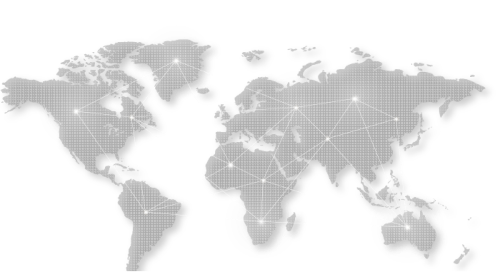
Back pain can feel like an uninvited guest—unexpected, uncomfortable, and stubborn in its insistence to stay. It doesn’t care if you’re at work, out with friends, or trying to get a restful night’s sleep. No matter what you’re doing, it always seems to remind you that something isn’t right. But here’s the good news: relief is possible, and one effective solution lies in physical therapy.
When we think of back pain relief, many of us may picture resting or reaching for over-the-counter painkillers. While these might provide temporary comfort, they don’t address the root cause of the pain, nor do they promote long-term healing. That’s where physical therapy steps in, offering a holistic approach to relieve your pain and help you regain a healthy, active lifestyle. If you’ve been dealing with back pain, here’s how physical therapy could be the key to getting you back on track.
Understanding Back Pain
Before we dive into how physical therapy helps, it’s essential to understand why back pain occurs in the first place. The human spine is a complex structure made up of bones, muscles, ligaments, and nerves. Any disruption or imbalance in these components—whether from poor posture, muscle strain, or injury—can cause pain. Back pain can range from mild discomfort to debilitating, chronic pain that impacts daily activities.
The severity of back pain can vary. For some, it’s a sharp, shooting sensation that makes it hard to move. For others, it’s a dull, nagging ache that lingers throughout the day. Regardless of the type, back pain can prevent you from fully enjoying life. Whether it’s stopping you from bending over to pick up your kids, sitting through a meeting, or simply taking a walk, back pain doesn’t just hurt your body—it can interfere with your overall well-being.
Why Physical Therapy Works
Physical therapy is a comprehensive, non-invasive approach to healing the body and preventing future injuries. The primary goal of physical therapy for back pain is to restore movement and function while relieving pain. Through a personalized program, physical therapists work with patients to address the underlying causes of their discomfort and create a treatment plan tailored to their needs.
One of the key reasons physical therapy is so effective is its focus on strengthening and stabilizing the muscles surrounding the spine. Often, back pain arises from weak or imbalanced muscles. When muscles lack strength or endurance, the spine can become more vulnerable to injury. A skilled physical therapist will assess your body’s posture, movements, and muscle strength to identify weak points and imbalances. They’ll then design a targeted exercise regimen to improve your strength, flexibility, and mobility, helping to support the spine and alleviate discomfort.
Moreover, physical therapy doesn’t just treat the symptoms of back pain—it gets to the root causes, such as poor posture, tight muscles, or misalignments. By teaching you how to move better and improve your posture, physical therapy can address habits that may be contributing to your pain, ensuring that it doesn’t return after treatment.
How Physical Therapy Relieves Back Pain
- Pain Management
Physical therapists use a variety of techniques to help manage pain. One of the most common methods is manual therapy, which involves hands-on manipulation of the muscles and joints. This can help relieve tension, improve mobility, and reduce inflammation. Additionally, physical therapists may use modalities like heat, cold, or electrical stimulation to soothe pain and promote healing. These treatments can provide immediate relief while helping to restore function. - Strengthening Muscles
Many back pain issues stem from weakness in the muscles that support the spine. When these muscles are not strong enough, the body compensates by using other muscle groups, which can lead to strain and further injury. Physical therapy exercises are designed to target the core and back muscles, helping to build strength and improve stability. As these muscles grow stronger, they provide better support for the spine, reducing the risk of injury and pain in the future. - Improving Flexibility
Back pain is often associated with tight muscles and limited range of motion. Stretching and flexibility exercises, which are commonly incorporated into physical therapy programs, can help loosen up these tight muscles, reducing stiffness and improving mobility. Increased flexibility helps to alleviate pressure on the spine and surrounding structures, providing a sense of relief and making it easier to move without pain. - Posture Correction
Poor posture is a major contributor to back pain. Slouching, rounded shoulders, and improper alignment can put unnecessary stress on the spine and its supporting muscles. Physical therapists assess your posture and provide you with specific exercises and strategies to correct it. This might involve strengthening certain muscle groups while stretching others, and teaching you how to hold your body in a neutral position throughout the day. With improved posture, you can prevent future episodes of back pain. - Personalized Treatment Plans
Perhaps one of the most important aspects of physical therapy is its personalized approach. Every individual’s back pain is unique, and a cookie-cutter approach simply won’t suffice. Physical therapists take the time to evaluate your specific condition, goals, and needs. Whether your back pain is acute or chronic, they will develop a customized treatment plan that focuses on your specific issue, ensuring the most effective results.

The Importance of Consistency
As with any form of therapy, consistency is key. While you may feel relief after a few sessions, it’s crucial to stick with your treatment plan and continue with your exercises at home. Back pain is often a result of years of bad habits, so it’s essential to give your body time to heal and build strength.
It’s also worth mentioning that physical therapy isn’t just for those with severe back pain. Even if your pain is mild, seeking physical therapy can help prevent it from worsening over time. If you’re prone to back pain, regular sessions with a physical therapist can keep your spine strong, flexible, and aligned, reducing the chances of recurring discomfort.
Empowering Yourself Through Education
Another powerful aspect of physical therapy is the education you receive along the way. A physical therapist doesn’t just guide you through exercises; they teach you how to take care of your body long after your sessions are over. They provide advice on proper lifting techniques, how to sit and stand for maximum spinal health, and how to incorporate movement into your daily routine. When you leave a physical therapy session, you’ll feel more confident in your ability to manage and prevent your back pain.
By understanding the mechanics of your body and how to move it safely, you become empowered to take control of your health. This newfound knowledge helps you maintain long-term wellness and avoid future injury.
Suggested Reading: Effective Shoulder Pain Relief: Therapy vs. Pain Medication
Conclusion
Back pain can be a frustrating and limiting condition, but it doesn’t have to control your life. Physical therapy offers a comprehensive, non-invasive approach to relieving pain, improving function, and preventing future injury. Through personalized treatment plans, manual therapy, strengthening exercises, and education, physical therapists help you understand the root causes of your pain and provide effective strategies to regain a pain-free life.
At Thrive Physical Therapy, we’re dedicated to helping individuals like you overcome back pain and return to the activities they love. Our expert team works closely with patients to develop individualized therapy programs that address both the symptoms and causes of back pain. If you’re ready to say goodbye to back pain, contact us at Thrive Physical Therapy, and let’s start your journey to recovery today.

